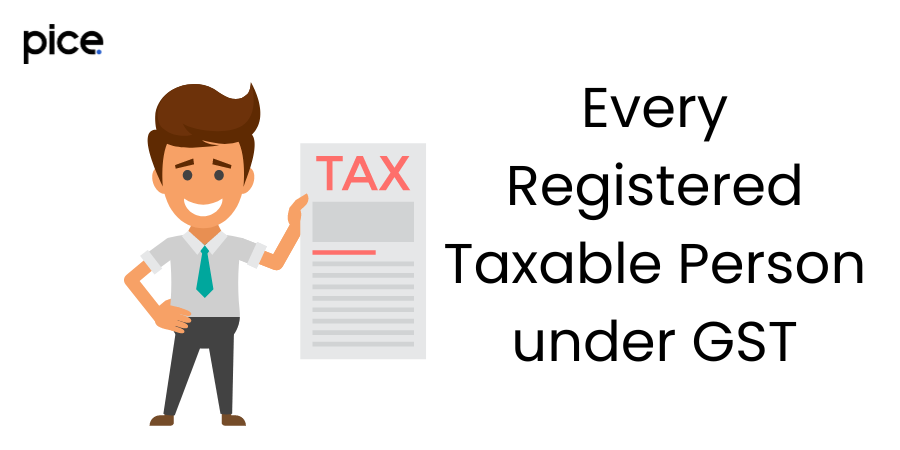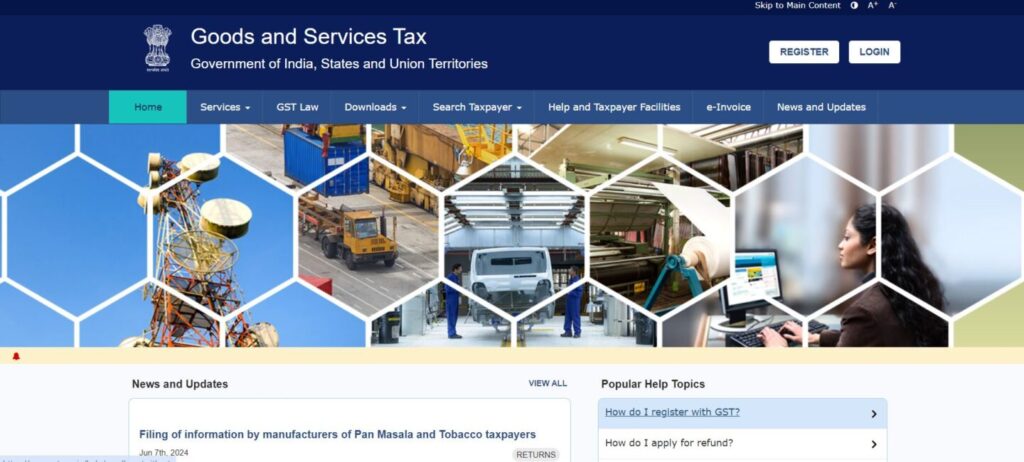Key Takeaway
- GSTR-3B is a monthly summary return essential for declaring outward supplies, input tax credit claims, and tax liabilities.
- Timely and accurate filing of GSTR-3B is crucial for maintaining GST compliance and avoiding penalties.
- The GSTR-3B summary in the GST Filing module is used for real-time data entry, while the Reports module provides historical data for review and reconciliation.
- Businesses must file GSTR-3B even if there are no transactions for the month, ensuring continuous compliance with GST regulations.
- Regular reconciliation and accurate reporting in GSTR-3B help optimize ITC claims and ensure proper GST liability management.
What is Form GSTR-3B?
Form GSTR-3B is a monthly self-declaration return that every registered taxable person under the Goods and Services Tax (GST) regime must file. This form is essential for declaring the summary of outward supplies, input tax credit (ITC) claims, and tax liability for a specific tax period. Unlike other forms such as GSTR-1, which provides detailed transaction data, GSTR-3B requires summary information, making it crucial for businesses to ensure accurate and timely compliance.
The GSTR-3B Return plays a vital role in the overall GST filing process as it facilitates the determination and payment of GST liability. This return helps in streamlining the collection of revenue and ensuring that businesses remain compliant with direct tax regulations. Additionally, the data provided in Form GSTR-3B contributes to the calculation of the E-way bill, a mandatory document for the movement of goods.
Businesses should aim to optimise ITC claims while ensuring proper invoice matching to avoid discrepancies. Effective GSTR-3B Filing is essential for maintaining a smooth cash flow and ensuring timely vendor payments, thus contributing to vendor delight. Tax professionals often assist businesses in navigating the complexities of GSTR-3B to ensure accurate and compliant submissions on a monthly basis.
Who is Required to Submit Form GSTR-3B?

Every registered taxable person under GST is required to submit Form GSTR-3B, except for a few specific cases such as unregistered persons, those under the composition scheme, non-resident taxable persons, and Input Service Distributors (ISDs). This includes businesses engaged in Inter-State Supplies, as well as those with a tax liability arising from outward supplies.
A business must file GSTR-3B for each tax period even if there are no transactions during the current month. This ensures continuous compliance with GST regulations and avoids penalties for non-filing. The form must be filed on a monthly basis, and businesses must ensure that their GST payments and ITC claims are accurately reflected.
Direct tax compliance through GSTR-3B helps in maintaining transparency and avoiding future legal hassles. It’s important for businesses to work closely with tax professionals to manage their GST liability effectively. By doing so, they can ensure that all outward supply transactions are accurately reported, and input tax credits are claimed correctly.
Where Can I Submit Form GSTR-3B?

Form GSTR-3B can be submitted online through the GST portal, the official government platform for GST compliance. The GST portal provides a user-friendly interface for businesses to file their returns, make tax payments, and claim input tax credits.
To file GSTR-3B, taxpayers need to log in to the GST portal using their credentials, navigate to the return filing section, and select the appropriate tax period. The form must be filled with details of outward supplies, ITC claims, and GST liability. After verifying the details, the taxpayer can submit the form and make the necessary GST payments.
The GST portal also provides resources and support for taxpayers to understand the filing process better. It’s crucial for businesses to ensure that their data is accurate before submission to avoid any issues with invoice matching or discrepancies in tax liability calculations.
When is the Deadline for Filing GSTR-3B?
The deadline for filing GSTR-3B is the 20th of the subsequent month for which the return is being filed. For instance, the return for July must be filed by the 20th of August. Timely filing of GSTR-3B is crucial to avoid late fees and interest charges on the outstanding tax liability.
Businesses must be vigilant about the deadline to ensure compliance. Missing the deadline not only incurs financial penalties but can also disrupt cash flow and vendor payments. It’s advisable to prepare the return well in advance, taking into account the time needed for data reconciliation and invoice matching.
Tax professionals often recommend setting internal deadlines to ensure that all necessary documents and data are ready before the official deadline. This proactive approach helps in managing business compliances effectively and avoids last-minute rushes that could lead to errors.
What is the Format of GSTR-3B?
The format of GSTR-3B is designed to be straightforward and user-friendly, enabling businesses to quickly and efficiently declare their GST liabilities and Input Tax Credit (ITC) claims for each tax period. The form is divided into several sections, each of which serves a specific purpose in summarizing a business’s transactions and tax obligations.
Sections of GSTR-3B
- Details of Outward Supplies and Inward Supplies Liable to Reverse Charge:
- This section captures the summary of all outward supplies (sales) made during the month, including inter-state supplies and supplies to unregistered persons. It also includes inward supplies on which the recipient is liable to pay tax on a reverse charge basis. The data entered here forms the basis for calculating the total tax liability.
- Outward Supply: This part includes the taxable value, Integrated GST (IGST), Central GST (CGST), State GST (SGST), and Cess for each category of supplies.
- Details of ITC Available:
- This section records the input tax credit available from different sources, such as IGST, CGST, SGST, and Cess. It includes details of ITC from imports and ITC available from inward supplies on which tax is paid under reverse charge.
- This section is crucial for businesses as it helps them claim the credit for the taxes already paid on inputs, thereby reducing their overall tax liability.
- Details of ITC Reversed:
- This section requires the reporting of any ITC that needs to be reversed due to ineligible credits or other reasons specified under GST law. Properly reporting ITC reversal is essential to ensure accurate calculation of net tax liability.
- Details of GST Liability and Payments:
- This section summarizes the total tax liability for the period and details the payments made towards this liability. It includes details of tax payable, tax paid through ITC, and tax paid through cash. Accurate reporting here ensures that the business’s GST liability is correctly settled.
- Details of Interest and Late Fee Payable:
- If there are any delays in filing the return or making the GST payments, this section captures the interest and late fees payable. Ensuring timely filing and payment helps businesses avoid these additional costs.
Importance of Accurate Reporting
Accurate completion of each section of GSTR-3B is vital for maintaining compliance with GST regulations. Businesses should regularly reconcile their data to ensure that the information reported in GSTR-3B matches their actual transactions. This helps in avoiding discrepancies and potential audits or penalties.
Instructions for Online Filing of GSTR-3B
Filing GSTR-3B online through the GST portal is a systematic process that requires careful attention to detail to ensure compliance and accuracy. Here’s a step-by-step guide to help you navigate the online filing process:
Step-by-Step Procedure for Online Filing
- Log In to the GST Portal:
- Visit the GST portal and log in using your credentials (GSTIN, username, and password). Ensure that your credentials are secure and not shared with unauthorized persons.
- Access the Return Filing Dashboard:
- After logging in, navigate to the ‘Services’ tab. Under this tab, select ‘Returns’ and then ‘Returns Dashboard.’ This will take you to the page where you can select the appropriate return period.
- Select the Tax Period:
- Choose the tax period (month) for which you want to file the return. Ensure that you select the correct month to avoid filing errors.
- Fill in the GSTR-3B Form:
- Click on ‘Prepare Online’ to start filling in the GSTR-3B form. Enter the details in each section:
- Outward Supplies: Report all taxable outward supplies, including inter-state supplies and supplies to unregistered persons.
- ITC Claims: Enter the input tax credit details from various sources.
- ITC Reversal: Provide details of any ITC that needs to be reversed.
- Tax Liability and Payments: Summarize the tax payable and the payments made.
- Click on ‘Prepare Online’ to start filling in the GSTR-3B form. Enter the details in each section:
- Review and Verify Details:
- Carefully review all the details entered in the form. Verification ensures that there are no errors or omissions, which could lead to discrepancies and potential penalties.
- Make GST Payments:
- Calculate the tax liability and make the necessary payments using the available ITC or through cash. The portal provides options for payment through various online modes.
- Submit the Return:
- After verifying and making the payments, submit the GSTR-3B form. The portal will generate an acknowledgement receipt, confirming the successful filing of the return.
- Download and Save the Acknowledgment:
- Download and save the acknowledgment receipt for your records. This serves as proof of filing and is useful for future reference and audits.
💡If you want to pay your GST with Credit Card, then download Pice Business Payment App. Pice is the one stop app for all paying all your business expenses.
Tips for Smooth Filing
- Regular Reconciliation: Regularly reconcile your accounts to ensure that the data reported in GSTR-3B matches your business records.
- Maintain Accurate Records: Keep detailed records of all transactions, invoices, and ITC claims.
- Seek Professional Help: If you are unsure about any aspect of filing, consult with tax professionals who can provide guidance and ensure compliance.
Distinction Between the GSTR-3B Summary and the GSTR-3B Summary Report
Understanding the difference between the GSTR-3B summary in the GST Filing module and the GSTR-3B summary report in the Reports module is crucial for accurate tax reporting and compliance. While both serve to provide information about GSTR-3B filings, they are used for different purposes and at different stages of the tax compliance process.
GSTR-3B Summary in the GST Filing Module
- Purpose:
- The GSTR-3B summary in the GST Filing module is used for the actual preparation and submission of the GSTR-3B return. It captures the real-time data entry of outward supplies, ITC claims, tax liabilities, and payments for the current tax period.
- Real-Time Data Entry:
- This module allows businesses to input their transaction data for the specified tax period. It is an active interface where taxpayers enter details of their sales, purchases, and tax credits.
- Calculation of Tax Liability:
- The GST Filing module helps in calculating the total tax liability based on the entered data. It also facilitates the payment of GST using available ITC and cash balances.
- Submission of Return:
- After completing the data entry and making the necessary payments, businesses can submit their GSTR-3B return through this module. The submission generates an acknowledgment receipt, confirming compliance for the tax period.
GSTR-3B Summary Report in the Reports Module
- Purpose:
- The GSTR-3B summary report in the Reports module provides a comprehensive overview of all submitted GSTR-3B returns. It is used for review, reconciliation, and audit purposes, giving businesses a historical perspective on their GST filings.
- Historical Data Review:
- This module offers detailed reports of past GSTR-3B filings, allowing businesses to review their GST compliance over multiple tax periods. It includes data on outward supplies, ITC claims, and tax payments.
- Reconciliation:
- The reports module is essential for reconciling the data reported in GSTR-3B with the actual business transactions. This helps in identifying discrepancies, errors, or omissions that need to be corrected.
- Audit and Compliance:
- The summary report is valuable during audits as it provides a clear and detailed record of all GSTR-3B filings. It ensures that businesses can demonstrate their compliance with GST regulations to tax authorities.
Key Differences
- Functionality: The GST Filing module is for active filing and submission, whereas the Reports module is for reviewing and reconciling past filings.
- Data Entry vs. Data Review: The Filing module involves real-time data entry for the current period, while the Reports module provides historical data for review and analysis.
- Purpose: Filing module ensures compliance for the current tax period; the Reports module aids in overall compliance management and audit readiness.
By understanding these distinctions, businesses can effectively manage their GST filings, ensure accurate tax reporting, and maintain compliance with GST regulations. Regularly utilizing both modules helps in optimizing ITC claims, ensuring accurate tax liability calculations, and achieving a seamless GST compliance process.
FAQs
What is the purpose of GSTR-3B and how does it differ from Forms GSTR-1?
GSTR-3B is a monthly return form that provides a summary of a business’s outward supplies, input tax credit claims, and tax liability. Unlike Forms GSTR-1, which requires detailed transaction-level data, GSTR-3B captures consolidated information for quicker filing and payment. Both forms are crucial for GST returns, but GSTR-3B is used for immediate tax compliance while GSTR-1 is for detailed reporting.
How can I check the return status of my GSTR-3B filing?
You can check the return status of your GSTR-3B on the GST portal under the ‘Returns Dashboard’ by selecting the appropriate return filing period. The status will indicate whether your return is filed, pending, or needs correction. Keeping track of the return status is essential for maintaining secretarial compliances and ensuring timely submissions.
Can I file GSTR-3B on a quarterly basis instead of monthly?
GSTR-3B must be filed on a monthly basis. However, small taxpayers with turnover below a specified threshold may opt for quarterly returns under certain schemes, but they still need to file GSTR-3B monthly. Ensuring timely monthly filing helps in maintaining consistent cash flow and compliance with GST regulations.
What should I do if I have no transactions during the return filing period?
If there are no transactions during the return filing period, you must still file a ‘Nil Return’ for GSTR-3B. Filing a Nil Return ensures that your business remains compliant and avoids penalties for non-filing. It’s a critical part of secretarial compliances for businesses under GST.
How do I correct errors in my current return after submission?
If you notice errors in your current return after submission, you can adjust these in the subsequent month’s GSTR-3B or during the annual return filing. It’s important to reconcile your data regularly to avoid discrepancies in previous returns and ensure accurate reporting in future filings. Correcting errors promptly helps maintain accurate GST returns and avoids potential audits.
Is it necessary to file GSTR-3B even if my business has filed previous returns accurately?
Yes, it is necessary to file GSTR-3B every month regardless of the accuracy of previous returns. Each return filing period requires a separate submission to capture the transactions for that specific month. Continuous and timely filing ensures ongoing compliance with GST regulations and helps in tracking monthly tax liabilities.
How do I manage secretarial compliances related to GSTR-3B?
To manage secretarial compliances for GSTR-3B, ensure timely and accurate filing of monthly returns, regular reconciliation of transactions, and proper maintenance of records. Utilize the GST portal to track return status and rectify any discrepancies in previous returns promptly. Engaging with tax professionals can also help in navigating the complexities of GST returns and maintaining overall compliance.








